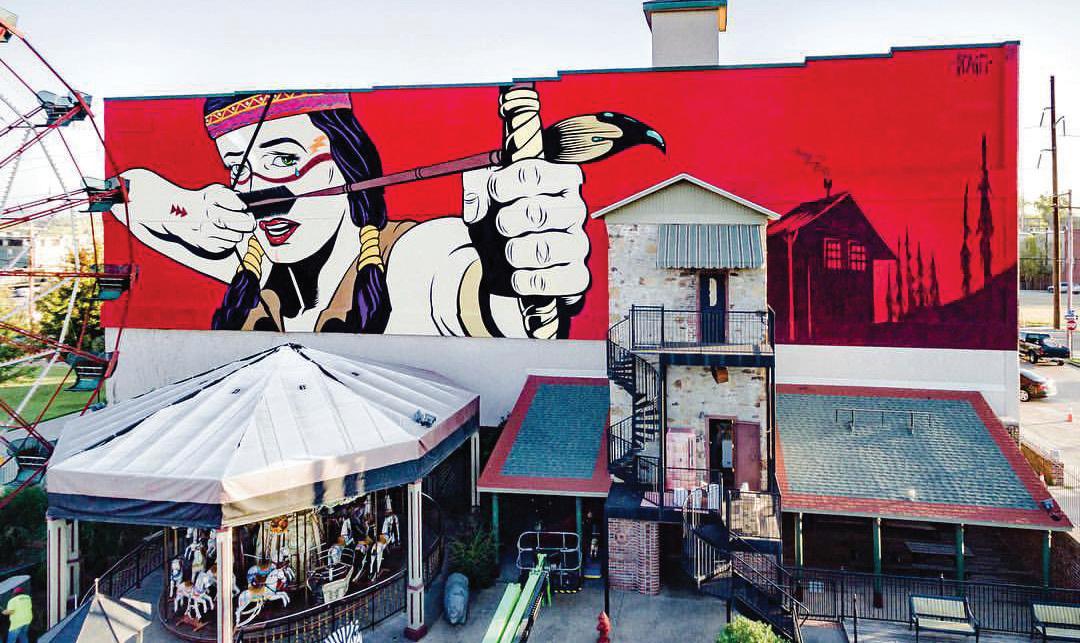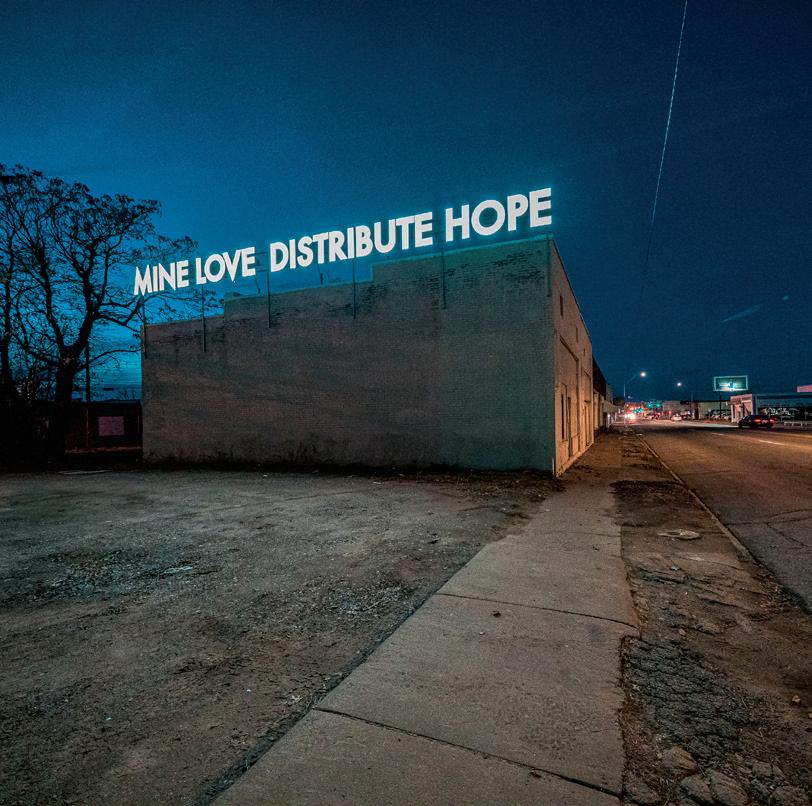
7 minute read
Favorite Son: John McIntosh
Favorite Son
John McIntosh
words Dwain Hebda IMAGEs Jade Graves Photography Arkansas is a state of civic pride. People remember where they came from and speak of these places with a particular note ringing in their voices. Asked about their hometown, people proudly recite the high school mascot, relay the local attractions and recommend what café serves the best pecan pie.
John McIntosh is one such person; a local boy who couldn’t wait to get out of town to go to college, but who quickly returned and has for decades sought to improve and promote Fort Smith. Even today, in the embrace of retirement from the marketing firm he founded and ran, he gushes about his hometown in ways that puts the Chamber of Commerce to shame.
“I was born in ‘47, grew up in the ‘50s and ‘60s; it was a great time to grow up here. Life was good,” he said. “A funny thing, it was one of those things where I couldn’t wait to get out of town, but once I was out of town and got married and had a kid it looked like a pretty good place to come back to.”
That‘s exactly what John and his wife Judi did, migrating back to Fort Smith to live, work and raise their four children. With each passing year, their roots deepened and their fondness for the place grew, even as the community went through the economic ups and downs that came with changing times.
“I think Fort Smith can be described as rising above,” he says. “We have had a lot of shock and a lot of economic challenges that have happened in Fort Smith. It’s an ebb and flow. It’s easy to get discouraged, but you know what? As a ball player, as long as there was time on the clock, we were giving it everything we could give it. And I see Fort Smith that way.
“There’s no quit in Fort Smith. There’s so much community support in this town to make sure that everything goes well. It just continues to inspire me.”
McIntosh harnessed that inspiration into bringing new artistic features to town and with that, new venues and amenities. For example, he was a key figure in the development of the Fort Smith Riverfront which today stands as one important pillar of McIntosh’s legacy of community development.
“Back in the mid ‘90s I was the chairman of the Riverfront Development Task Force. This was before the development of anything on the Riverfront, including the amphitheater,” he said. “It precluded the first penny sales tax, which went to development of the Riverfront, the convention center and the library system. Steering that committee in the mid ‘90s really stimulated me and showed me how to be effectively involved and it carried over ever since.”
The venues that grew out of that experience also allowed other events to grow, such as the city’s Riverfront Blues and Peacemaker music festivals, which have benefited greatly from the Riverfront infrastructure.
“[The Blues Festival] was really a stimulus to the development of the Riverfront back in the ‘90s,” he says. “The Blues Festival cannot claim all the credit for that, but it was certainly helpful to show the citizens of Fort Smith what we could do on the Riverfront and that there’s real economic development driven by the arts.”
As substantial a project as that was, McIntosh was just getting warmed up in his quest to turn Fort Smith into a hub of artistic activity. Looking for a means to enhance that reputation in a big way a few years back, McIntosh was one of the first enthusiastic backers of a radical new idea dubbed The Unexpected which sought to create public art in the form of murals. “It was interesting for me how The Unexpected came about. It was on a whim,” McIntosh said. “I have to give credit to Steve Clark and his vision; he had seen what happened in other communities around the country that brought international art in. And we asked ourselves, ‘Why don’t we do this? Who’s keeping us from doing this?’”
McIntosh didn’t just like the idea; he was willing to take the concept to local building owners to sell them on the idea of allowing the project to paint a mural on the side of their building.
“They would say, ‘Okay, what’s the mural going to be about? What is it going to look like?’ My answer was, ‘It’s going to be an international artist interpretation of our community and of our area,’” he says. “They would look at me like I was crazy. Probably I was, but it shows you the acceptance this community has for doing something new.
“Anyway, of all the building owners I talked to in five years, I had about two turn downs. I expected the batting average to be much lower than that.”


Today, The Unexpected is not only one of the most ambitious public art projects in Arkansas, it’s widely credited with providing the blueprint for other communities to organize public art. This is particularly true for murals which can now be found in cities and towns all over The Natural State.
“In the past five years we’ve created thirty-five pieces of public art in downtown Fort Smith and it’s primarily from bringing artists from all over the globe to Fort Smith,” McIntosh says. “It’s created a very artist-friendly community here, which was the goal of The Unexpected. It’s allowed our community and surrounding areas to see art that they would not otherwise have the opportunity to see.”
McIntosh said the effort is more than something nice to do; it pays specific dividends for Fort Smith from boosting tourism to improving quality of life for permanent residents.
“There are so many opportunities to socialize and enjoy the arts in Fort Smith that I think we often overlook because we just don’t talk about it very much,” he said. “Fort Smith has a healthy art community. We are so blessed to have the Wingate Art and Design building at the University of Arkansas Fort Smith and the regional art museum downtown. Those are two very impressive galleries and museums. And we have to give a shout out to the Wingate Foundation who in large part made those possible with their gifts.
“People around the state and around the country see Fort

Smith a little differently. How can you not see Fort Smith a little differently with thirty-five pieces of public art scattered around town? That creates a lot of conversation and it says something about us.”
Now in his seventies, McIntosh continues to push for new and better things to promote his beloved hometown. Most notably, he sits on the board of the new River Valley Film Society which will host the city’s first film festival next summer. He's also tinkering with rebranding the live music scene, as it emerges from being shut down during COVID19. Even as he does so, he’s always looking to what’s next.
“First and foremost is the completion of the U.S. Marshals Museum. It’s a tall order but it will be done,” he said. “The second is, we have to make the most of what we have. I don’t think we’ve been really good about that. We need to promote ourselves more and differently in the future. The market has changed and I think the pandemic is going to change the market even more.
“I think people will stay closer to home for their trips and their stay-cations. I think we need to concentrate on promoting the things that bring people to town and that’s the entertainment value, the arts value of downtown and the Riverfront. It’s time we got back to the basics and start raising our hand and say, ‘Hey, not only is this a great place to live, it’s a great place to be entertained. Come spend a weekend with us and let us show you what we have.’”












